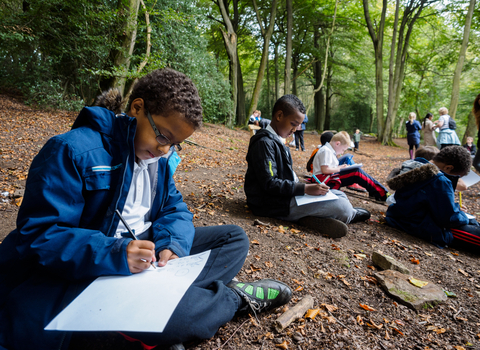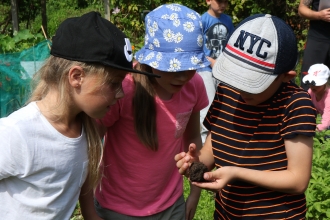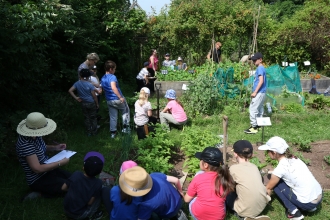Are you learning about classification, evolution and adaptation with your class?
Our two hour creative science workshops, delivered in school, are a fantastic introduction to these key stage 2 topics! A Worcestershire Wildlife Trust school tutor will delve into the science with your pupils. To bring the topic alive, a local artist will use creative and fun crafts that will enhance the knowledge gained about classification or evolution.
Costs are £200 for the first class and £75 for the second class. For example, if you book one Year 4 and one Year 6 class, you can book the sessions on different dates during the academic year and still take advantage of a discount on the second class. If two classes are booked, the cost will be approximately £4.60 per head. These sessions are delivered in your school setting, so no coach travel required!
Supports
YR4 & YR6 Science
YR4 Beasts in a bag
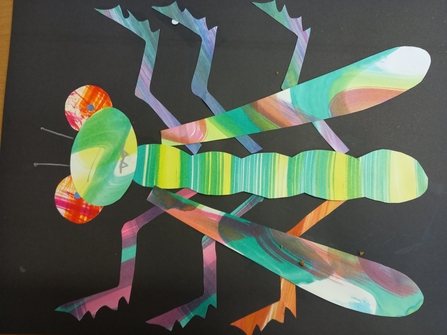
A collage of an insect
Curriculum link: Living things and habitats; Classification
We will develop knowledge about how to put invertebrates into common groups to be able to understand more about how invertebrates are adapted to their environment.
This will be brought alive by looking at pond minibeasts in our tank or if you have a school pond, we can bring our kit and go pond dipping with your pupils.
Then working with a local artist, Maggie Hobbs, pupils will build on their knowledge about different body parts and how we can use these to classify invertebrates. Pupils will create a minibeast collage using pre-cut minibeast body parts on inked papers and will explain how they imaginative minibeast is adapted.
Learning objectives –
- Understand the meaning of invertebrate and the different sub groups
- Know the main body parts of an insect
- Be able to group invertebrates into sub-groups
- Understand how certain body parts allow for adaptation to an environment
- Improve their mastery of art and design techniques and be introduced to the work of artist Clare Youngs.
YR6 PAWS, FLIPPERS AND PADDLES
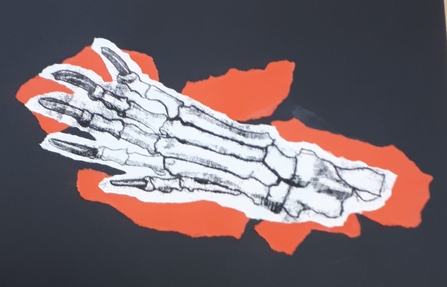
Mono-ink print of bone structure
Curriculum link: Living things and habitats; Evolution and adaptation
Through the session pupils will delve into osteology; the study of bones! They will develop knowledge about how animal limbs evolved over a long period of time in response to the requirements for survival and the habitats they live in.
Team games will develop knowledge about how animal limbs are similar but have evolved to adapt to their environments. Pupils will construct a hand model to examine key human forearm and hand bones. They will then play a fast-paced game - Where are the phalanges?’ – to identify similar bones in other mammals.
Finally working with local artist, Maggie Hobbs, students will learn the technique of mono-printing and study closely the evolved bones and adaptations of different mammals.
Learning objectives –
- Understand the basic bone structure of an animal limb
- Able to explain similarities and differences between two animal limbs
- Able to give reasons for why two animals have evolved different limbs
- Understand how these limbs allow animals to survive in their chosen habitat
- Become proficient in a new art technique and be introduced to the work of Klee and Pissarro
The children loved it!Suckley Primary School

